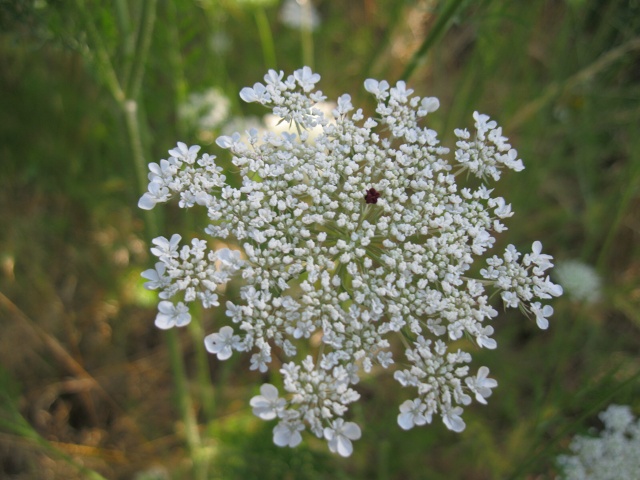Queen Anne's Lace was introduced from Europe,
and the carrots that we eat today originated from this plant.
The flowers are tiny and white, blooming in lacy, flat-topped clusters.
Each little flower has a dark, purplish center.
People can eat the large taproot, which is a carrot.
The leaves of the plant are toxic, and may irritate the skin.
After the flowers mature, they curl inward to build a "birds' nest" shape.
